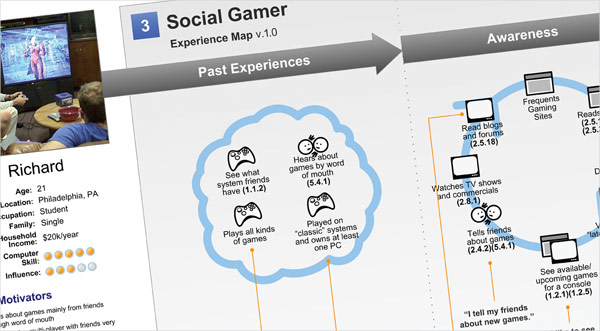1. Emotion is Experience
We receive information about the world from our senses.
Because we don’t have the attention required to process and interpret all the information we receive each day, a lot of the information we encounter is simply screened out (Davenport & Beck, 2001). Our brains then process and interpret the information that has actually made it into our heads. This information is represented and compared to the information we already know.
The information you take in informs your mental model or “map†of the world and reality.

Because no one can be exposed to everything, everyone’s map is incomplete. No single person’s map can possibly encompass “all†of reality. This inherent limitation naturally leads to some heated debates between people with different “maps†about the nature of existence, god and a number of other interesting questions that we won’t attempt to address here.
But let’s back up for a minute. What is it that keeps information from being ignored or screened out in the first place? What is it that selects the information that actually gets into our brains and becomes part of our mental models of reality? Attention selects relevant information by focusing on it and deletes information that’s considered irrelevant by simply ignoring it.
Emotion is the energy that drives and directs attention.
Emotions and other affective states like moods, sentiments and personality traits influence every aspect of our interactions with brands, products, and websites (Forlizzi & Battarbee, 2004). This includes our intentions, our plans, and any feedback on whether we achieve success. Our plans are our internal representations of sequences of events, actions, and consequences. Plans provide a link between the goals we envision in our minds and the actual realization of those goals in the physical world.
Affective states run the range from short-term emotions to long-term personality traits.
In this way, affective states act as continuously shifting influences that are always altering perception and triggering the mental processes that lead to behavior. In emotion research circles, this influence is called “emotional affect†(Russell, 1980).
Emotional affect can be envisioned as a lens that constantly colors our realities.
This lens is so pervasive and ubiquitous that it’s easy to forget that it’s there, unless our emotions become intense enough to demand and divert our attention. The color and focus of the lens may change depending on the quality of the emotions we’re experiencing, but the lens is always there, subtly influencing how we see the world. We explore the effects of emotional affect in more detail in Chapter 2 of the book.
next: “2. All Design is Emotional Design” >
References
- Davenport, T. H., & Beck, J. C. (2001). The attention economy: Understanding the new currency of business. Cambridge, MA: Harvard Business School Press.
- Forlizzi, J., & Battarbee, K. (2004). Understanding experience in interactive systems. DISÂ 2004. p. 264.
- Russell, J. A. (1980). A circumplex model of affect. Journal of Personality and Social Psychology, 39, 1161–1178.
Download the rest of Chapter 1
| back to top |
Category: Chapter 1 Excerpts

